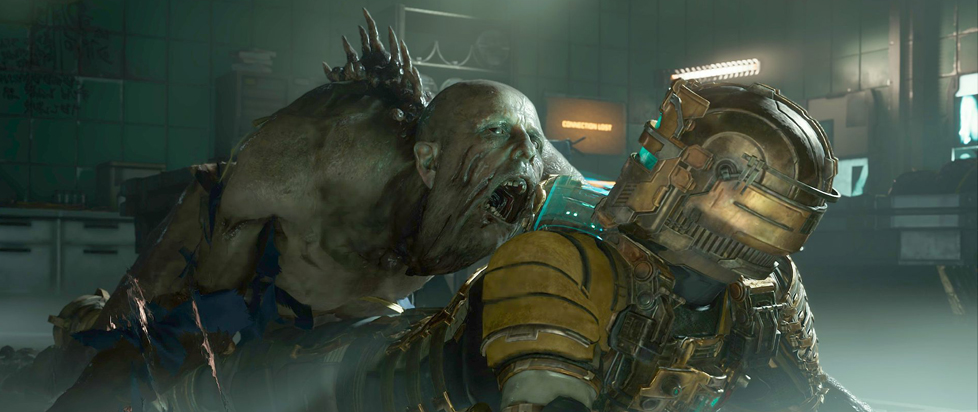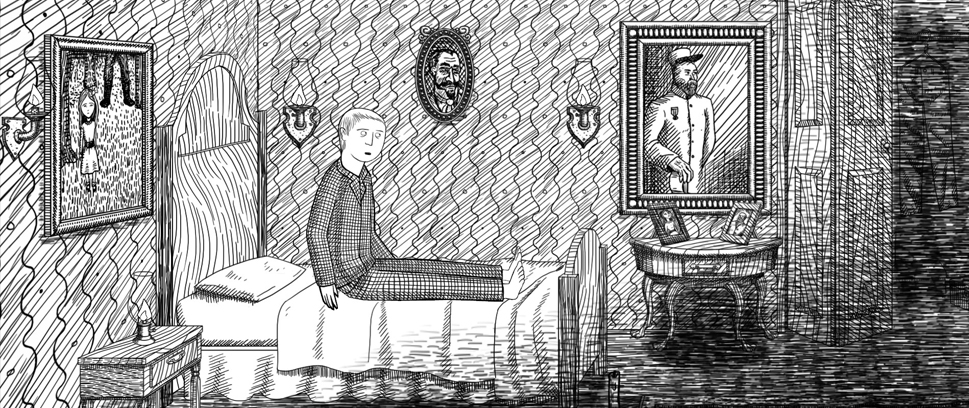
In Defense of the Jump Scare: A Manifesto

This column is a reprint from Unwinnable Monthly #172. If you like what you see, grab the magazine for less than ten dollars, or subscribe and get all future magazines for half price.
———
We are what we’re afraid of.
———
Picture This: You’re a teenager, bored on a Friday night. You and your friends decide to go see whatever mid-budget horror film is playing at the movies that weekend. You get there, fully intending to exercise your adolescent bravado, because you are officially Too Cool to Be Scared. But as the film continues along, you start to feel slightly tense. Then incredibly tense. Then absolutely unbearably tense until – WHAM. The bad guy suddenly appears right behind the hapless protagonist. You literally (as befits the name) jump in your seat. But then the moment passes, and the shock of this unexpected-but-totally-expected presence fades. You open your mouth and you laugh. How stupid that was.
I would assume that this is how most of us experienced jump scares in horror media – as objects of ridicule, only good fodder for adolescent derision. The case against jump scares is long and storied, and rests on the idea that a jump scare is the lowest common denominator of horror. A jump scare does nothing to provide a lingering sense of unease – you aren’t thinking about the jump scare later that night when you can’t sleep. The second they are over, they disappear, leaving very little residue. Jump scares are the cotton candy of horror, or so the argument goes. And because they do not linger on the palate, we think of them as something lesser than true horror and suspense, something that is beneath the true auteurs. This attitude is particularly damaging for videogame horror, because of how common generic expectations for combat predispose gameplay toward these moments of enemies suddenly appearing.
This is where I disembark. I personally adore the jump scare, but beyond just liking it, I think it serves an incredibly important purpose in the horror genre, and horror games specifically, to provide a dynamic pressure gauge for the tension of the experience. Consider, for example, a horror movie with few to no jump scares (and there are several good ones). The experience of watching one of these movies, like a Peele or an Aster, is very much a process of endurance. You spend the entire two hours in a state of dread that inexorably increases as the film progresses. You leave the experience potentially moved or unsettled by the things you saw, true, but you also leave exhausted, because you were just put through an emotional gauntlet.

So, here’s my argument – I believe jump scares function as a necessary pressure-release valve for the experience of watching horror, thus allowing the experience to be less unrelentingly tiring. Films or games with carefully timed jump scares place them at moments of peak tension, and the aftermath of the jump scare resets our internal anxiety to some degree – we jump, but then we laugh, and we settle back into the experience noticeably calmer, until the tension of the experience ramps up again. In this way, jump scares actually work to make consuming horror content a more emotionally sustainable practice.
Additionally, and more specific to the work of gaming in horror, jump scares also serve a very important mechanical purpose of increasing the difficulty of engaging in precise input. Last month I waxed poetic about the revolver-loading mechanic in Amnesia: The Bunker, and here I guess I’m making a sort of similar point – when you’re really freaked out, even if that is a momentary feeling, you tend to get worse at stuff. So, in a game like Dead Space, which I feel is the undisputed king of the videogame jump scare, not only does it release an emotional pressure valve for the player, it also tests the player’s ability to do things like aim, reload and move their character such that Isaac Clarke doesn’t get dismembered. This added layer of functionality means that jump scares serve the dual purpose of emotional sustainability and a quantifiable difficulty scaling mechanic.
Obviously, at the end of the day, whether or not jump scares are your cup of tea remains a personal preference. Some people find the physical reaction of a jump scare more distinctly unpleasant than a two-hour slog through an arthouse horror film – sort of like how you can decide to swallow the bad-tasting medicine or live with the stomachache (I personally detest Pepto-Bismol). But I think considering the jump scare to be an inherently inferior tactic of cheap or kitschy media productions misunderstands what it does to and for the audience, particularly in a games setting.
———
Dr. Emma Kostopolus is an Assistant Professor of English at Valdosta State University. Online, you can find her nowhere, but check out her film reviews for Ghouls Magazine and her recent article for Computers and Composition Online. She’s also the co-author of Ace Detective, a murder mystery dating sim you can play at oneshotjournal.com.




